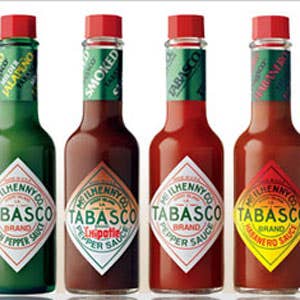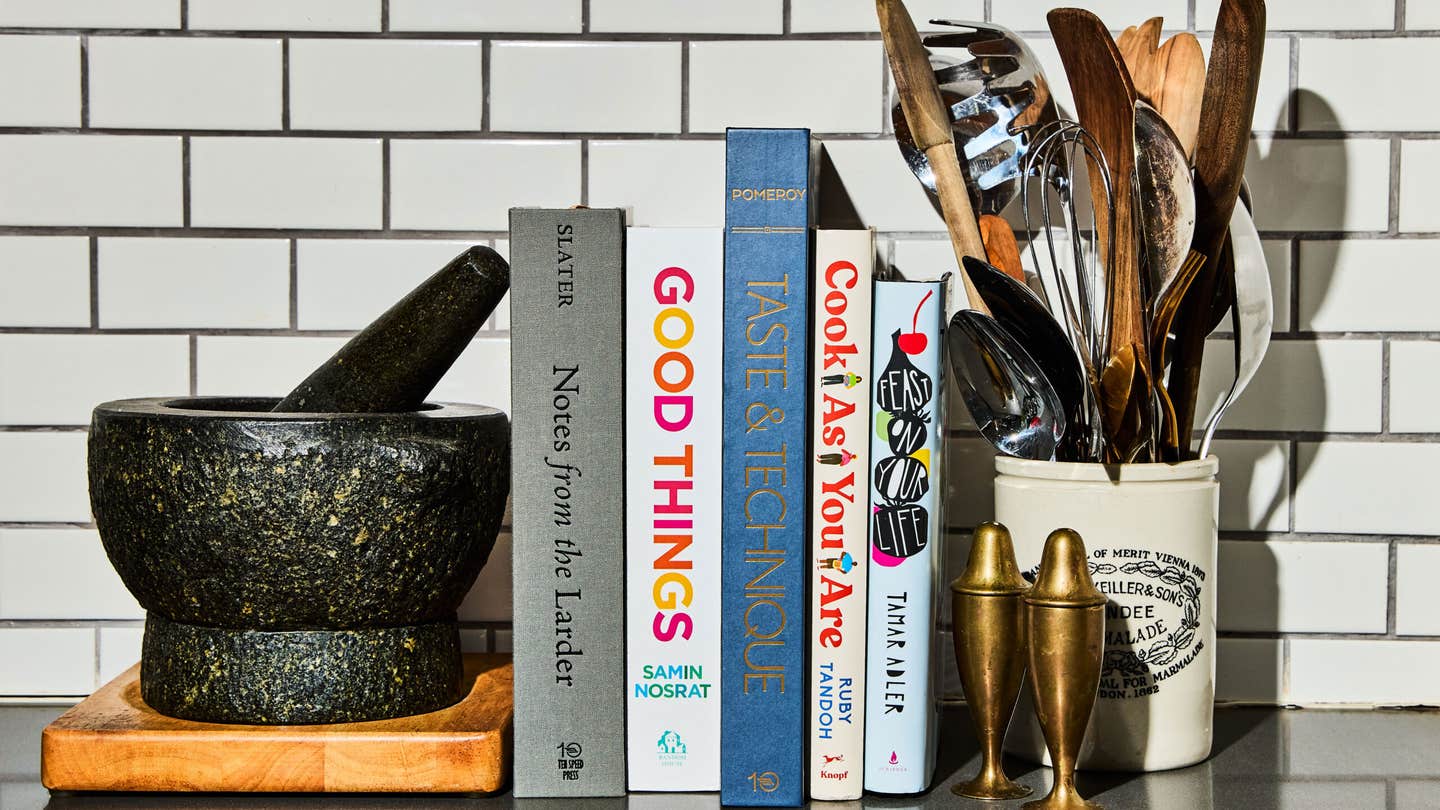
Tabasco Cheesecake, Anyone?
Chef Jason Gronlund shares some of his favorite, creative uses for America’s quintessential hot sauce.
This year marks the 140th birthday of Tabasco sauce, the piquant pepper and vinegar concoction invented on Avery Island, Louisiana, by Edmund McIlhenny, a banker and avid gardener who cultivated the peppers for the original blend in his own backyard. If you grew up in America and have ever sipped a bloody mary or chewed on a chicken wing, chances are you've sampled Mr. McIlhenny's product. I've been a devotee of the spicy sauce for decades, though until recently I rarely used it as more than a simple splash for scrambled eggs, burritos, or nachos. That all changed last spring, when, after a chance encounter in a Mexican restaurant in Orlando, Florida, Jason Gronlund, the McIlhenny company's executive chef, invited me into his home for an elaborate meal of Tabasco-inspired dishes. As a graduate of Johnson and Wales culinary school and a former U.S. army cook, Gronlund has a wealth of knowledge and experience in the food industry and plenty of tricks up his sleeve. Over the course of our dinner together he shared some of his kitchen secrets with me and, between bites of tangy Oyster Sliders, New Orleans-Style Barbecue Shrimp, and chocolate lava cake with Homemade Orange Blossom Marshmallows (drizzled with Tabasco-laced caramel sauce, of course), put to rest all my preconceived notions about Tabasco sauce.
What's a typical day in the Tabasco test kitchen like?
It varies a lot from day to day because I wear many hats at the company. Basically, I oversee the development of new products and help create recipes that use Tabasco products as ingredients. People all over the world recognize our name, but often they see Tabasco sauce as a Western ingredient, so it's up to me to acquaint them with other ways in which it can be used.
**Your job requires you to stay on top of the latest culinary trends. What's exciting you right now?
**
My travels for work do afford me the opportunity to see what's going on worldwide and how that translates to the U.S. It's clear that as it's become easier for people to travel and see international markets, more and more consumers have become exposed to a more diverse pantry. That's wonderful. As for dining trends, I've been seeing an increase in interest in tabletop grilling, as in Korean BBQ and Chinese hot pot. I also think we're beginning to see a resurgence in fusion food, but this version is much more sophisticated than the one that was all the rage more than a decade ago. Chefs are learning to peel back the layers of global cuisines to see the new flavors they can offer because consumers are looking for more-exciting ingredients as their palates expand.
**You've been spending a lot of time in Asia lately. Why do you think the region's cuisine makes a good companion for Tabasco?
**
Our products have been big in Asia for a long time, but traditionally most people have used them primarily on Western foods like pizza. As a chef I've always wondered why that is, and recently it hit me. If you disregard our brand name and where we are made, the original red Tabasco sauce is a simple mixture of vinegar and chiles that have been fermented. Of course, chiles, vinegar, and fermented preserves also happen to be major flavor components of Asian cuisine, so I think that perhaps putting a dash of Tabasco on Western foods makes them taste a little more familiar.
**Even in this country, though, most consumers use Tabasco only as a condiment.
**
In 1868, when Tabasco sauce was invented, it was promoted as a novel way to add a touch of flavor to food, but now the uses for Tabasco are limitless. It can do so many things besides just make food taste hot. In small doses, our original red sauce adds a unique background note to dishes without adding heat, and, like a pinch of nutmeg in cream soups, it enhances and supports other flavors. The green Tabasco is much lower in heat than the original red, and when added to salad dressing it introduces a bright, fresh green pepper accent. I use our chipotle Tabasco in everything from barbecue chicken to savory cheesecakes. And even though our habanero Tabasco has double the heat level of the original red version, its heat combines amazingly well with sweet fruits like banana, tamarind, papaya, and mango. It's almost as though tropical fruits could bring out the inherent fruitiness of the habanero pepper.
**What are some of the most unusual techniques you have developed?
**
Well, when I talk with cooks about using Tabasco in their desserts they usually look at me as though I had just grown an arm out of my forehead, but adding chiles to sweets is one of my favorite methods. Dried chiles impart depth to chocolate, and fresh green chiles add an earthiness. I think you can take gingerbread to a new level by blending a dry chile into the batter. And if I'm making rhubarb pie, I add a dash of poblano sauce to the filling to amplify the vegetal flavor of rhubarb. Every year I test a different Tabasco ice cream; two of the best from recent years were Granny's Hot Apple Cobbler and Hot Brownie Sundae.
**I've always used Tabasco in my bloody mary special. Do you have any advice on ways to use it in other cocktails?
**
Oh, yes. In most cases, a dash of Tabasco is all it takes to strike the right balance between flavor and heat. I've come up with recipes for a Hot Cocoa Martini, **an Avery Island Sangria, and a Pineapple Ginger Martini**, but the list is practically endless.
Keep Reading
Continue to Next Story










